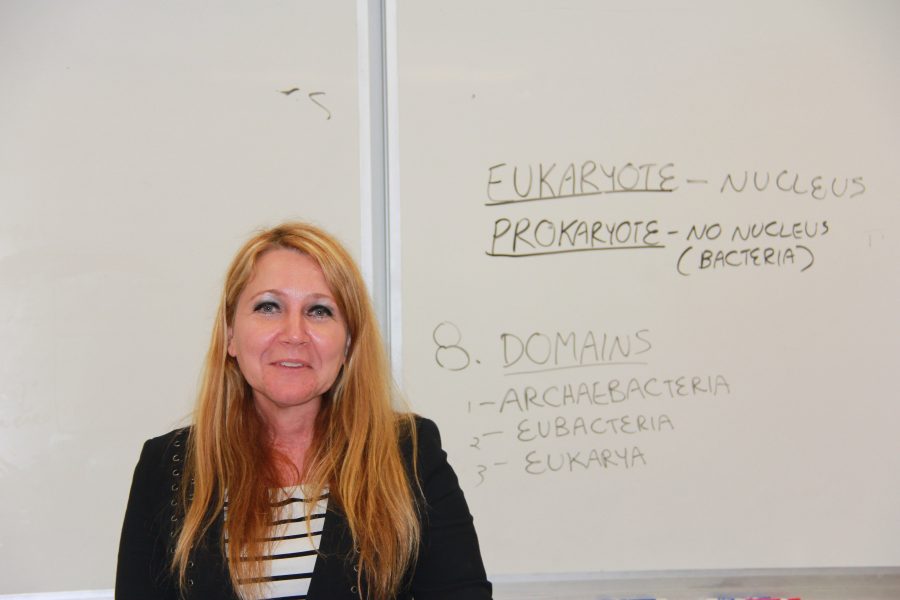New science teacher embraces creative teaching methods
ahmed awadallah
Lynda Mason, the newest addition to the Science Department, enjoys the new freedom and creativity of teaching AP Biology at Paly.
Lynda Mason, a new addition to the Palo Alto High School staff, has uniqe experiences with teaching styles and their effects on learning. With over 10 years of experience teaching several different science courses, Mason said that Paly’s curriculum is different than that of her old school’s in Florida.
“[Paly’s curriculum is] different in a way that allows more creative teaching,” Mason said. “[Teachers are] able to use more involved instruction, where the students are actually developing projects.”
Her previous experience in teaching included a multitude of courses such as Biology, AP Biology, Forensic Science and Zoology, which give her a unique viewpoint on different curriculums.
“Before it was much more structured and just a lot of teaching to the test,” Mason said. “[Paly] seems to be an environment where [the teachers and administration] are really promoting =more creative and project-based learning,” Mason said.
At her previous school there was a lot more lecturing and montonous note-taking.
While some teachers in Mason’s previous school used this interactive style of teaching, most did not. However at Paly, most teachers do use this style of interactive teaching
“The students are actually engaged in what they’re doing,” Mason said. “Here it seems like a lot of teachers are involved in performing laboratory investigations and having the students do their own research projects and independent learning.”
Mason prefers this style of teaching over the traditional style and she believes that it is more beneficial for the students.
“It [gives] the students ownership of their education,” Mason said. “I think that’s really important. That’s one huge difference.”
Your donation will support the student journalists of Palo Alto High School's newspaper

